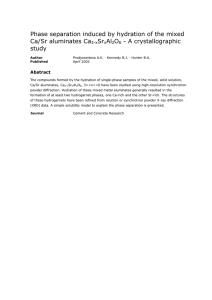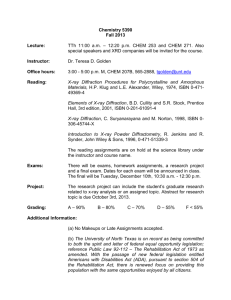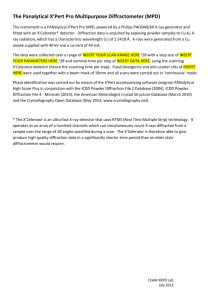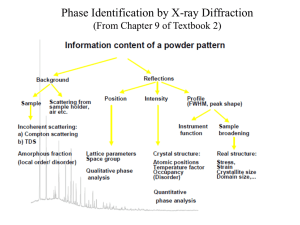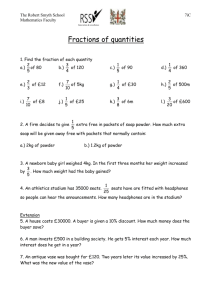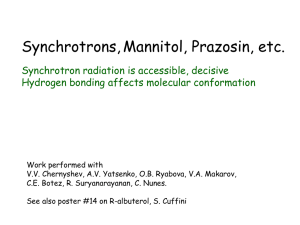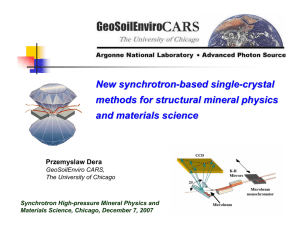abstract_ono
advertisement
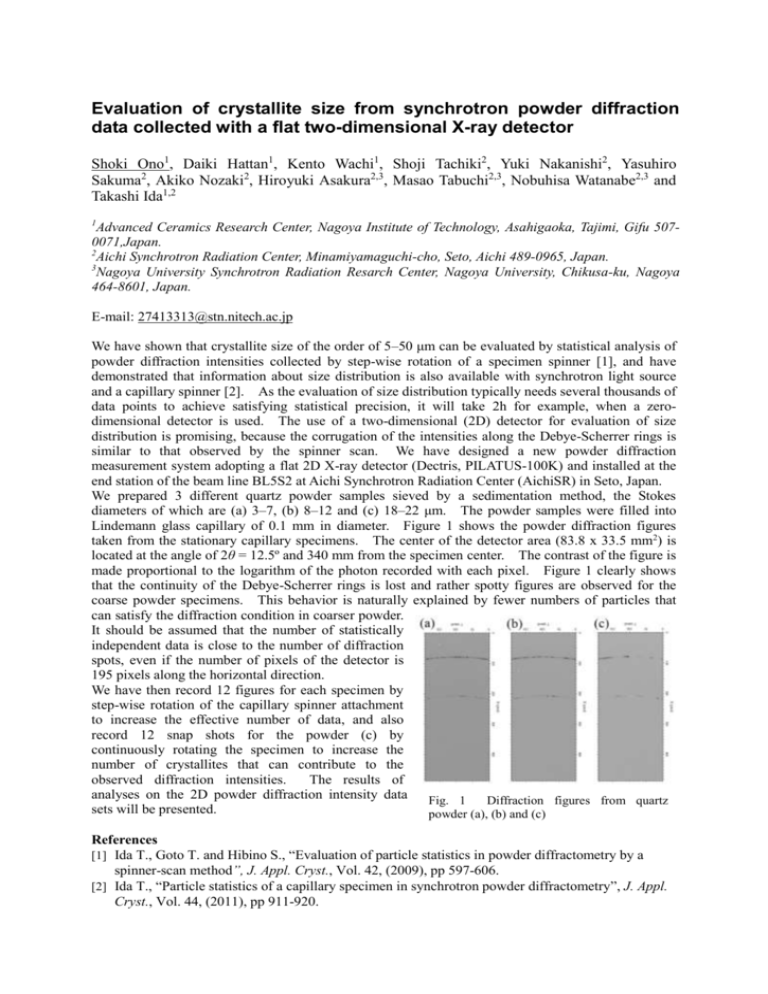
Evaluation of crystallite size from synchrotron powder diffraction data collected with a flat two-dimensional X-ray detector Shoki Ono1, Daiki Hattan1, Kento Wachi1, Shoji Tachiki2, Yuki Nakanishi2, Yasuhiro Sakuma2, Akiko Nozaki2, Hiroyuki Asakura2,3, Masao Tabuchi2,3, Nobuhisa Watanabe2,3 and Takashi Ida1,2 1 Advanced Ceramics Research Center, Nagoya Institute of Technology, Asahigaoka, Tajimi, Gifu 5070071,Japan. 2 Aichi Synchrotron Radiation Center, Minamiyamaguchi-cho, Seto, Aichi 489-0965, Japan. 3 Nagoya University Synchrotron Radiation Resarch Center, Nagoya University, Chikusa-ku, Nagoya 464-8601, Japan. E-mail: 27413313@stn.nitech.ac.jp We have shown that crystallite size of the order of 5–50 μm can be evaluated by statistical analysis of powder diffraction intensities collected by step-wise rotation of a specimen spinner [1], and have demonstrated that information about size distribution is also available with synchrotron light source and a capillary spinner [2]. As the evaluation of size distribution typically needs several thousands of data points to achieve satisfying statistical precision, it will take 2h for example, when a zerodimensional detector is used. The use of a two-dimensional (2D) detector for evaluation of size distribution is promising, because the corrugation of the intensities along the Debye-Scherrer rings is similar to that observed by the spinner scan. We have designed a new powder diffraction measurement system adopting a flat 2D X-ray detector (Dectris, PILATUS-100K) and installed at the end station of the beam line BL5S2 at Aichi Synchrotron Radiation Center (AichiSR) in Seto, Japan. We prepared 3 different quartz powder samples sieved by a sedimentation method, the Stokes diameters of which are (a) 3–7, (b) 8–12 and (c) 18–22 μm. The powder samples were filled into Lindemann glass capillary of 0.1 mm in diameter. Figure 1 shows the powder diffraction figures taken from the stationary capillary specimens. The center of the detector area (83.8 x 33.5 mm2) is located at the angle of 2θ = 12.5º and 340 mm from the specimen center. The contrast of the figure is made proportional to the logarithm of the photon recorded with each pixel. Figure 1 clearly shows that the continuity of the Debye-Scherrer rings is lost and rather spotty figures are observed for the coarse powder specimens. This behavior is naturally explained by fewer numbers of particles that can satisfy the diffraction condition in coarser powder. It should be assumed that the number of statistically independent data is close to the number of diffraction spots, even if the number of pixels of the detector is 195 pixels along the horizontal direction. We have then record 12 figures for each specimen by step-wise rotation of the capillary spinner attachment to increase the effective number of data, and also record 12 snap shots for the powder (c) by continuously rotating the specimen to increase the number of crystallites that can contribute to the observed diffraction intensities. The results of analyses on the 2D powder diffraction intensity data Fig. 1 Diffraction figures from quartz sets will be presented. powder (a), (b) and (c) References [1] Ida T., Goto T. and Hibino S., “Evaluation of particle statistics in powder diffractometry by a spinner-scan method”, J. Appl. Cryst., Vol. 42, (2009), pp 597-606. [2] Ida T., “Particle statistics of a capillary specimen in synchrotron powder diffractometry”, J. Appl. Cryst., Vol. 44, (2011), pp 911-920.
